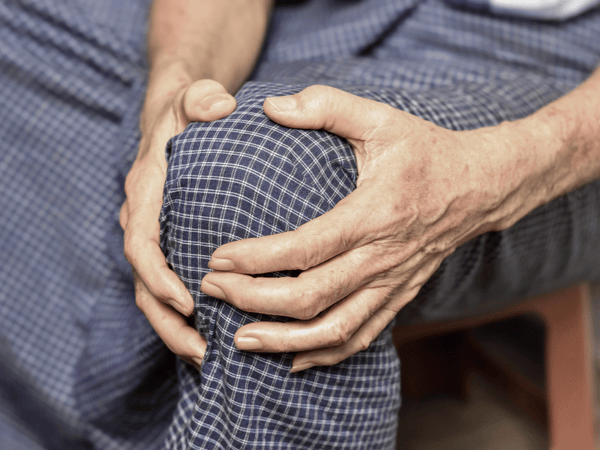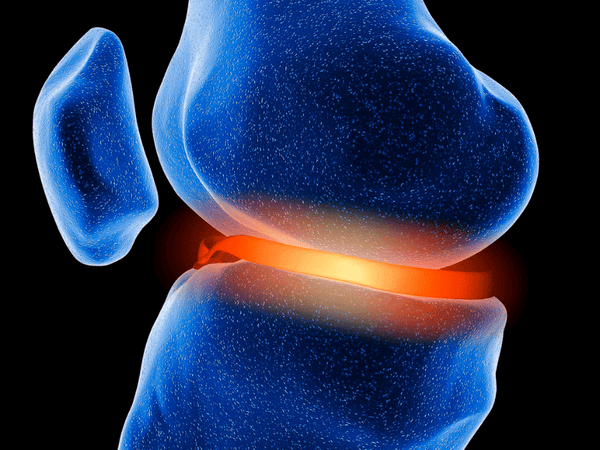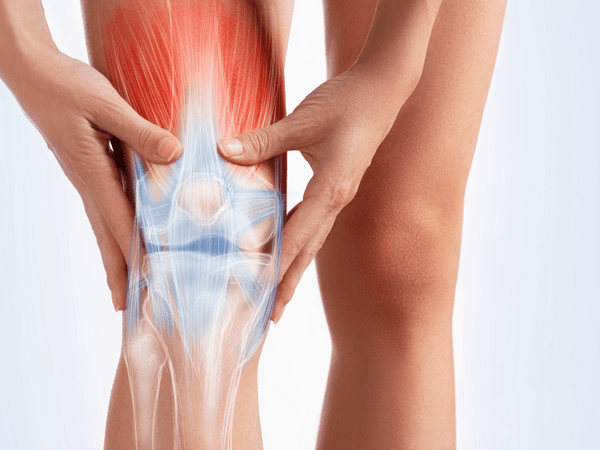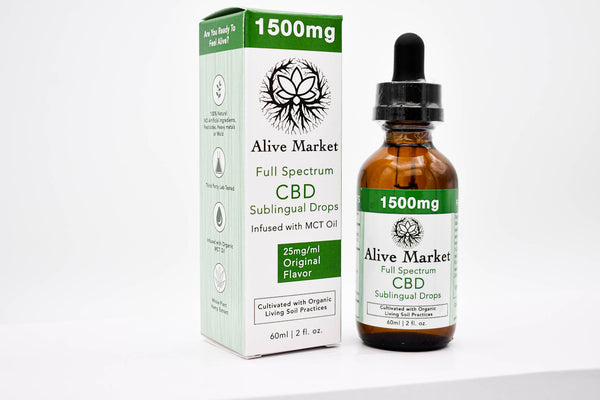Experiencing pain in the back of the knee when straightening the leg after sitting is a common issue that affects many individuals, impacting their daily activities and overall quality of life. This discomfort, called posterior knee pain, can range from mild to severe and may be accompanied by back pain behind the knee, stiffness, swelling, or a limited range of motion. Understanding the causes and appropriate management strategies for this type of knee pain is essential for addressing the underlying issues and improving mobility.
In this article, we will delve into the anatomy of pain behind the knee joint, exploring the intricate structures that play a role in its function. By gaining a deeper understanding of the potential causes and treatment options for pain in the back of the knee when straightening the leg after sitting, individuals can take proactive steps to alleviate discomfort, improve knee function, and enhance their overall well-being.
Anatomy of the Knee
A fundamental understanding of the knee's anatomy is crucial in comprehending why pain may arise in the back of the knee after prolonged periods of sitting. The knee joint is a complex structure comprised of bones, tendons, ligaments, and cartilage, all working together to facilitate movement and support the body's weight.
Overview of Knee Structure

The knee joint is formed by the articulation of three bones: the femur (thigh bone), the tibia (shin bone), and the patella (kneecap). These bones are connected by ligaments, including the anterior cruciate ligament (ACL), posterior cruciate ligament (PCL), medial collateral ligament (MCL), and lateral collateral ligament (LCL), which provide stability to the joint.
Ligaments, Tendons, and Muscles
Within the knee joint, ligaments serve to connect bones and provide stability during movement. Tendons attach muscles to the knee bones, allowing for joint motion. Key muscles involved in knee movement include the quadriceps muscle at the front of the thigh, which straighten the knee, and the hamstrings at the back of the thigh, which bend the knee.
Focus on the Back of the Knee
While posterior pain can manifest in various areas, our focus here lies on discomfort experienced in the back of the knee. This region is home to crucial structures such as the posterior cruciate ligament (PCL), which helps prevent the tibia from sliding under too much stress too far backward, and the popliteal tendon, which facilitates knee flexion.
Common Causes of Pain in the Back of the Knee
Pain in the back of the knee when straightening or sudden, sharp pain anywhere in the leg after sitting can stem from various underlying causes, ranging from muscle tightness to more serious structural issues.
Tight Hamstrings

Explanation: Hamstring injury is the tightness in the hamstring muscles, located at the back of the leg muscles and the thigh, that can contribute to pain behind the knee when attempting to straighten the leg. The hamstring muscle injury is common in athletes who have to run fast in sports like basketball, track, cricket, and soccer.
Symptoms: Individuals may experience a pulling sensation or discomfort in the back of the affected leg below the jumper's knee sometimes, particularly when extending the leg after sitting for prolonged periods.
Treatment: Stretching exercises targeting the hamstrings can help relieve pain, alleviate tightness and improve flexibility of hamstring muscle. Examples include seated hamstring stretches, standing hamstring stretches, and using a foam roller to massage the muscles.
Baker's Cyst/Posterior Cruciate Ligament Injury

Definition: Another common cause of pain behind the knee is Baker's cyst, also known as a posterior cruciate ligament injury popliteal cyst. This is a fluid-filled swelling that is sometimes called posterior knee pain and develops behind the knee joint.
Symptoms: Pain, swelling, and stiffness in the back of the affected leg or lower leg below the knee, especially after prolonged sitting or physical activity.
Treatment: Treatment options may include rest, ice therapy, compression, using knee braces and elevation (R.I.C.E.), along with anti-inflammatory medications to treat pain and reduce swelling. In some cases, aspiration or surgical removal of the cyst may be necessary.
Meniscus Tear

Description: The meniscus is a rubbery cartilage that acts as a shock absorber between the femur (thigh bone) and tibia (shin bone). A tear in the meniscus can occur due to sudden and severe pain from a twisting motion or overuse injuries. Risk factors for meniscus tears include advanced age, male gender, work-related kneeling, and climbing stairs.
Symptoms: Swelling, stiffness and pain behind the knee, particularly during activities that involve bending the knee rest or straightening the leg.
Treatment: Treatment options for meniscus tear vary depending on the minor injury and the severity of the tear, but may include rest, physical therapy, corticosteroid injections, or, in severe cases, arthroscopic surgery to repair or remove the damaged tissue. climbing stairs
Other Possible Causes
Arthritis

Degenerative conditions such as osteoarthritis or rheumatoid arthritis can cause inflammation and pain in the knee joint, including the back of the knee. In osteoarthritis, the cartilage in the knee joint gradually wears away. This causes the bones in the knee to rub against each other, which can cause bone spurs. Rheumatoid arthritis causes swelling in the synovial membranes that cover the knee joint.
Bursitis

Inflammation of the bursa, small fluid-filled sacs that cushion the knee joint, can lead to discomfort and pain behind the knee.
Deep Vein Thrombosis

It is a blood clot that forms in one of the body's deep veins, found in the lower leg.
Patellar Tendon Injury

This patellar tendon injury involves damage or tearing of the tendon that connects the patella (kneecap) to the tibia (shin bone). This type of injury can lead to significant knee pain, particularly during activities that involve straightening the leg.
Overuse Injuries: Repetitive activities or excessive strain on the knee joint, such as running or jumping, can result in overuse injuries and subsequent pain in the back of the knee.
Alive Market Full Spectrum CBD Oil
Alive Market CBD Oil is a natural remedy that has garnered attention for its potential to alleviate various types of pain, including discomfort in the back of the knee when straightening the leg after sitting. This discomfort can arise from various factors, such as muscle strain, inflammation, or underlying medical conditions like arthritis.
Additionally, CBD's analgesic properties may help alleviate pain sensations, making it easier to straighten the leg after periods of sitting. It's important to note that while some individuals may experience relief from using CBD oil, results can vary, and it's advisable to consult with a healthcare professional before starting any new supplement regimen, especially if you have underlying health conditions or are taking medications.
Diagnosis and Medical Evaluation
Addressing pain in the back of the knee after sitting requires a thorough diagnosis by a healthcare professional to pinpoint the underlying cause accurately. A comprehensive medical evaluation is essential to rule out serious conditions, determine the appropriate treatment approach, and prevent further complications.
Importance of Consulting a Healthcare Professional
Accurate Diagnosis: A healthcare provider, such as a primary care physician, orthopedic specialist, or sports medicine physician, can conduct a physical examination and order diagnostic tests to identify the specific cause of knee pain.
Tailored Treatment Plan: Based on the diagnosis, healthcare professionals can develop a personalized treatment plan that addresses the individual's unique needs and circumstances.
Prevention of Complications: Prompt medical evaluation can help prevent potential complications associated with untreated knee injuries or underlying medical conditions.
Diagnostic Process
Physical Examination: During the physical exam, the healthcare provider will assess the range of motion, stability, and tenderness of the knee joint. They may also inquire about symptoms, medical history, and recent activities that may have contributed to the pain.
Imaging Tests: Diagnostic imaging tests, such as X-rays, MRI (magnetic resonance imaging), or ultrasound, may be ordered to visualize the internal structures of the knee joint and detect any abnormalities, such as fractures, ligament tears, or cartilage damage.
Specialized Tests: In some cases, additional specialized tests, such as arthroscopy, may be recommended to directly visualize the inside of the knee joint and confirm the diagnosis.
Referrals to Specialists
Orthopedic Surgeon: If surgical intervention is necessary, the healthcare provider may refer the individual to an orthopedic surgeon for further evaluation and treatment.
Physical Therapist: A physical therapist can provide rehabilitative exercises, manual therapy, and other interventions to improve knee function, reduce pain, and prevent future injuries.
Rheumatologist: For individuals with underlying inflammatory conditions such as arthritis, a rheumatologist may be consulted to manage the underlying autoimmune disease and alleviate symptoms.
Treatment and Management Strategies
Once a diagnosis has been made, the focus shifts to implementing treatment and management strategies aimed at alleviating pain, improving mobility, and addressing the underlying cause of knee discomfort. Treatment approaches may vary depending on the specific condition diagnosed and the individual's overall health status.
Conservative Treatment Options
Rest and Activity Modification: Temporary rest and avoiding activities that exacerbate symptoms can help reduce strain on the affected knee or joint and promote healing.
Ice Therapy: Applying ice packs to the back of the knee can help alleviate pain and reduce inflammation. Ice therapy should be applied for 15-20 minutes at a time, several times a day.
Compression and Elevation: Using compression bandages or wearing a knee brace can provide support and reduce leg swelling further. Elevating the leg when resting can also help improve circulation and reduce fluid buildup.
Physical Therapy
Strengthening Exercises: A physical therapist can prescribe specific exercises to strengthen the muscles surrounding the knee joint, including the quadriceps, hamstrings, and calf muscles. Strengthening these muscles can treat posterior knee pain because it can improve stability and support the knee during movement.
Stretching Exercises: Gentle stretching exercises targeting the hamstrings, quadriceps, and calf muscles can help improve flexibility and range of motion in the knee joint.
Manual Therapy: Techniques such as massage, joint mobilization, and manual manipulation may be used by physical therapists to reduce arthritis pain, improve tissue flexibility, and enhance overall knee function.
Medical Interventions
Corticosteroid Injections: In cases where conservative treatments fail to provide adequate knee pain relief alone, corticosteroid injections may be administered to reduce inflammation and alleviate pain.
Surgical Options: For severe or persistent knee pain caused by conditions such as knee injuries such as meniscus tears, ligament injuries, tendon injuries, or advanced arthritis, surgical intervention for knee treatment may be necessary. Surgical procedures for knee treatment may include arthroscopic surgery, knee replacement surgery, or other joint preservation techniques.
Lifestyle Modifications
Weight Management: Maintaining a healthy weight can help reduce stress on the knee joint and decrease the risk of developing or exacerbating knee joint pain afterward.
Proper Body Mechanics: Practicing proper body mechanics, such as using correct posture, avoiding excessive kneeling or squatting, and wearing supportive footwear, can help prevent strain on the knee joint.
Activity Modification: Adjusting activities or sports that involve repetitive movements or high impact on the knees can help reduce the risk of overuse injuries and minimize pain and discomfort.
Prevention Tips
While addressing pain in the back of the knee after sitting is crucial, implementing preventive measures can help reduce the likelihood of experiencing recurrent discomfort and future knee problems.
Maintain a Healthy Weight
Reduce Excess Stress: Excess body weight can place added stress on the knee joints, increasing the risk of developing knee pain and degenerative conditions such as osteoarthritis. Maintaining a healthy weight through balanced nutrition and regular exercise can help reduce strain on the knees.
Stay Active
Strengthening Exercises: Engaging in regular exercises for the muscles surrounding the knee joint, including the quadriceps, hamstrings, and calf muscles, can help improve stability and support the knees during movement.
Low-Impact Activities: Incorporating low-impact activities such as swimming, cycling, or walking into your exercise routine can help maintain joint flexibility and strengthen the muscles without placing excessive strain on the knees.
Warm-Up and Cool-Down
Proper Warm-Up: Before engaging in physical activity or exercise, it's essential to perform a proper warm-up routine to prepare the muscles and joints for movement. Dynamic stretching and light aerobic exercises can help increase blood flow and flexibility.
Cool-Down Stretching: After physical activity, take time to cool down and stretch the muscles surrounding the knee joint. Gentle stretching can help improve flexibility, reduce muscle tension, relieve pain, and prevent stiffness.
Avoid Prolonged Sitting or Standing
Change Positions Regularly: If your work or daily activities require prolonged periods of sitting or standing, be sure to change positions frequently and take short breaks to stretch and move around. Avoiding prolonged static positions can help prevent stiffness and discomfort in the knees.
Proper Footwear and Equipment
Supportive Footwear: Choose footwear with adequate cushioning and support to help absorb shock and reduce stress on the knees during walking, running, or other weight-bearing activities.
Proper Sports Equipment: When participating in sports or recreational activities, ensure that you use appropriate protective gear and equipment to minimize the risk of knee injuries.
Listen to Your Body
Pay Attention to Warning Signs: If you experience any pain, discomfort, or swelling in the knees, listen to your body and avoid activities that exacerbate symptoms. Ignoring warning signs of a knee injury or problems can lead to further knee injury and complications.
Conclusion
Pain in the back of the knee when straightening the leg after sitting can significantly impact daily activities and overall quality of life. However, with a comprehensive understanding of the potential causes, diagnostic processes, and treatment options, individuals can take proactive steps to address and manage this common issue effectively.
By recognizing the importance of seeking medical evaluation for an accurate diagnosis, individuals can gain insights into the underlying factors contributing to their knee discomfort. From tight muscles and ligaments to structural issues such as meniscus tears or arthritis, identifying the specific cause is essential for developing an appropriate treatment plan tailored to individual needs.
Through a combination of conservative treatments, physical therapy, pain management techniques, and, if necessary, medical interventions, individuals can alleviate pain, improve mobility, and enhance overall knee function. Moreover, adopting preventive measures such as maintaining a healthy weight, staying active, and practicing proper body mechanics can help reduce the risk of future knee problems and promote long-term knee health.
Ultimately, prioritizing knee health and seeking timely medical care can empower individuals to overcome pain in the back of the knee after sitting and enjoy an active, fulfilling lifestyle. By working collaboratively with healthcare professionals and incorporating preventive strategies into their daily routines, individuals can take control of their knee health and live life to the fullest.


